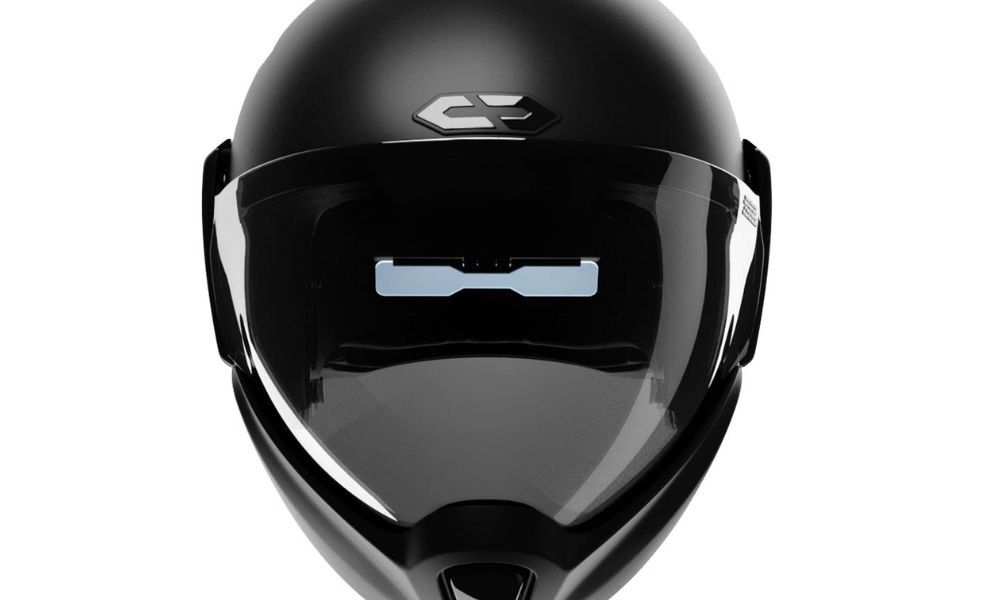Smart helmet technology is revolutionizing the way we approach head protection. No longer just a barrier between a person’s skull and danger, the smart helmet collects data, senses environmental risks, monitors health metrics, and sends alerts before disaster strikes. In industrial zones, sports fields, or medical labs, the smart helmet is becoming an active participant in safety and care. This shift is not subtle; it’s part of a growing revolution in how we guard health, prevent injuries, and respond to danger.

As demand increases across sectors, the smart helmet is emerging as a key player in the future of safety tech. With helmet EEG sensors, environmental sensors, motion tracking, real‑time video, and AI, these devices redefine what helmets can do. Companies large and small are driving the smart helmet market growth, pushing boundaries in materials, sensor miniaturization, and wireless connectivity. As advanced smart helmets enter common use, their influence will ripple through workplace safety, sports medicine, and healthcare far beyond what passive protection has ever achieved.
From Passive Shells to Data‑Driven Headgear
Passive helmets with nylon straps, hard shells, and foam linings have for decades assumed the task of absorbing impact, deflecting blows, and protecting from falling debris. But as technology advanced, the expectation shifted. What if helmets could react, sense, record, and warn? The smart helmet is the embodiment of that shift.
Sensors inside the helmet
Modern smart helmets are fitted with arrays of sensors: accelerometers, gyroscopes, GPS, cameras, microphones, environmental sensors (temperature, gas, decibel levels), and physiological monitors. One prominent feature is helmet EEG sensors, which record brain electrical activity. In sports applications like the NoMo project at Columbia, EEG sensors placed inside helmet padding aim to detect concussions in real‑time by observing brain wave changes after impacts.
In biomedical research, wearable brain scanner helmets with sensors (such as optically pumped magnetometers) record magnetic fields generated by brain activity even while the person is walking or moving. These let scientists gather neurological data without requiring a rigid, static setup.
Real‑time insight vs after‑the‑fact reports
A smart helmet doesn’t just gather data for later review; it aims to deliver real‑time insight. In industrial settings, features like motion sensors and gyros detect unsafe posture, rapid falls, or fatigue before they cause harm. Visual and audio feeds, combined with AI, can spot fires, aggression, or hazards immediately. GPS or indoor positioning systems allow geofencing; environmental sensors can detect gas leaks or high heat. What used to be passive safety becomes active, predictive, even preventive.
The Role of Helmet EEG Sensors in Medical and Sports Safety
One of the more powerful developments in advanced smart helmets is the incorporation of helmet EEG sensors. These sensors detect and record electrical activity in the brain—activity that changes with injury, fatigue, or even brain disorders.
Detecting Concussions in Contact Sports
In football, hockey, or other contact sports, concussions often go undetected on the field. The NoMo helmet project embeds EEG sensors inside padding to detect traumatic brain injury right after impact. Rather than relying on post‑event symptoms or subjective assessments, EEG sensors can pick up disruptions in brain wave patterns and send alerts to sideline medical teams. This enhances speed and accuracy in diagnosing injury.
Medical Diagnostics and Neurological Disorders
Beyond sports, helmet EEG sensors also have potential in diagnosing or tracking conditions like epilepsy, autism, Parkinson’s, stroke recovery, or brain development in children. The lightweight helmets with motion‑tolerant sensors allow more natural behavior during monitoring. For example, Nielsen et al. (via NIBIB) developed helmets that can record magnetic fields produced by brain activity (via OPM‑MEG) even as subjects move, expanding the possibilities of brain imaging in regular life settings.
Market Growth: Drivers, Challenges, and Futures
The smart helmet market growth has been substantial and is projected to accelerate. Let’s look at what’s fueling it and what may slow it down.
Drivers of growth
- Demand for workplace safety: Industries like construction, mining, oil & gas, and utilities all operate in high‑risk zones. Companies increasingly adopt smart helmets to reduce accidents, meet regulatory standards, and protect worker health. The promise of fewer injuries, lower insurance costs, and stronger safety records is a big motivator.
- Sports and performance sectors: Coaches, medical staff, and athletes are more aware than ever about brain injuries. The ability of advanced smart helmets with EEG sensors to monitor impacts, identify concussion risks, and offer data for recovery drives adoption in sports leagues.
- Healthcare innovation: Wearable brain sensors that allow monitoring while moving open possibilities in diagnosis and treatment. The research into helmet sensors recording brain function shows that smart helmet technology may find traction in clinics, research labs, and home healthcare.
- Regulations and legal compliance: Employers want more than just a helmet that “looks safe.” Real‑time data, environmental readings, and video documentation help with regulatory compliance, legal evidence, insurance claims, and ultimately, workforce safety culture.
Challenges to Widespread Adoption
- Cost and complexity: Advanced sensors like EEG or magnetic field sensors, shielding systems, power supply, data transmission, all this adds cost. For many smaller operations, these devices remain expensive.
- Comfort, weight, form factor: To be practical, smart helmets must remain wearable. Bulky, heavy, or poorly ventilated helmets reduce adoption. EEG sensors or magnetic shielding systems must be unobtrusive and safe.
- Data privacy and reliability: Collecting physiological data and video raises privacy concerns. Also, sensor data must be accurate, free from interference, and resilient in difficult environments.
- Regulatory and technical standards: Different jurisdictions may require different approvals, especially for medical uses. Interoperability, validation, and long‑term studies are necessary to build trust.
What’s Next: Future of Smart Helmets and Emerging Applications
The future of smart helmets looks promising. As we refine technologies, some new trends and applications are emerging.
Enhanced integration and miniaturization
Advanced smart helmets will shrink sensors, reduce power consumption, and integrate more functions into lighter shells. Helmet EEG sensors may become so compact that they blend in unseen, or be delivered via insertable modules. Real‑time telemetry (wireless cloud or edge‑computing) will get better.

Expanded use cases and cross‑industry convergence
- Occupational safety beyond construction: Agriculture, forestry, public safety (firefighters, rescue), utilities, energy sectors.
- Sports safety across age groups: Youth leagues, schools, amateur play. Concussion detection in hockey, soccer, football, and rugby.
- Healthcare and remote monitoring: Non‑static brain imaging, monitoring cognitive health, sleep behavior, epilepsy, and neurological disorders.
- Military applications: Detecting blast‑related brain injury, fatigue, and stress in combat zones.
Artificial intelligence, predictive insights, and data ecosystems
Future smart helmets won’t just issue alerts; they will predict risk. By combining motion, physiological, environmental, and behavioral sensors, AI algorithms can detect precursors to incidents: fatigue, dehydration, stress, and poor posture. The system will learn individual baselines and trigger warnings personalized to the wearer. Smart helmets will feed dashboards and safety platforms, enabling managers and healthcare providers to see risk patterns, intervene earlier, and optimize operations.
Balancing Promise and Practicality: What Users Need to Know
Before embracing smart helmets, users and organizations should weigh some factors to ensure that it’s worth it.
- Fit and user acceptance: If a helmet is uncomfortable or interferes with activity, users may disable sensors or avoid using it. Good design, adjustable fit, ventilation, and weight balance matter.
- Battery life and durability: Field use includes dirt, heat, moisture, and impact. Sensors must survive rough conditions, and power systems must last sufficient shift durations.
- Reliability of EEG and sensor readings: EEG sensors inside helmets must be robust to motion artifacts, noise, and must be validated in realistic use. Early prototypes (like the NoMo) have shown promise but also challenges.
- Privacy, data security, ownership: Who owns the data? How is it stored? How are video, physiological data managed? There must be clear policies.
- Cost‑benefit analysis: Smart helmets cost more than standard helmets. Organizations need to assess whether reduced risk, potential for fewer accidents, better health outcomes, or regulatory compliance justify the investment.
A Helmet That Thinks Ahead
The smart helmet is not just a safety upgrade; it’s a paradigm shift. Moving from passive protection to real‑time insight, with helmet EEG sensors, environmental awareness, motion tracking, and AI, the device is no longer just gear; it’s part of an automated safety net. The smart helmet market growth is propelled by need, technology, and awareness. Advanced smart helmets are proving themselves in labs, work sites, and sports fields.


No Comments